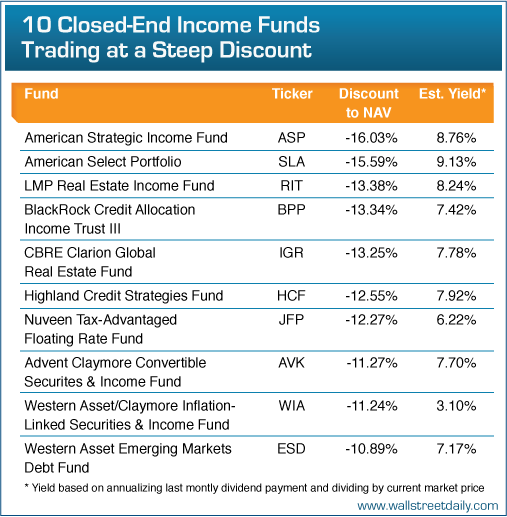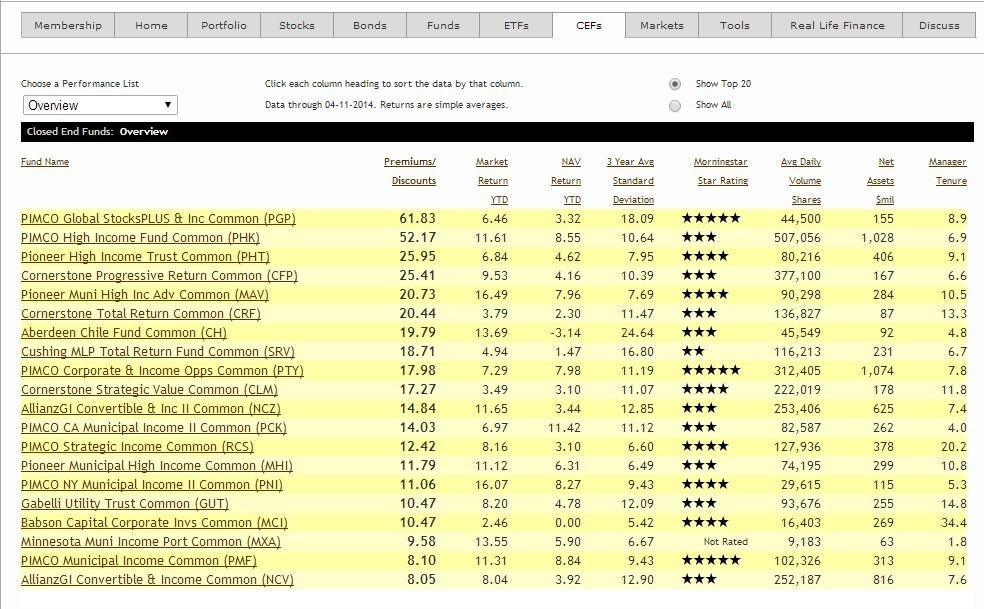Closedend funds pay high dividend you need to know
Post on: 16 Март, 2015 No Comment

Too many stocks, too little time? Click here to subscribe to Dividend Detective
C LOSED -E ND F UNDS
What You Need To Know
by Harry Domash
Click here to see a partial list of closed-end funds.
If you’re like most investors, you probably know little or nothing about closed-end funds. But you should! They offer advantages over conventional mutual funds. I’ll explain why, and then give you some names at the end.
Closed-end funds are similar to conventional managed mutual funds, but with one major difference: rather than selling and redeeming shares as needed, closed-end funds sell a fixed number of shares via an initial public offering (IPO). After that, the fund trades just like a stock. Buyers must purchase from existing shareholders, and shareholders must find a buyer if they want to sell.
Advantages
To appreciate why that’s important, you have to understand a little bit about the psychology of the typical mutual fund investor.
Research shows that most investors pour money into mutual funds long after the market has started to move up. Since mutual fund managers must deploy the new money, they are forced to buy stocks that have already scored big gains.
Conversely, many investors sell their mutual fund shares after the market has suffered a big drop. Thus, fund managers must raise cash to redeem fund shares by selling stocks that are likely trading near their lows. Bottom line: mutual fund investors force funds to buy high and sell low.
But closed-end fund managers don’t have that problem. Except for portfolio gains and/or losses, they have a fixed amount of money to invest. Thus, they can make investment decisions without worrying about raising cash to redeem shares, or finding places to invest unexpected new cash. This stability seems to lend itself particularly well to funds that focus on dividend paying investments.
Here’s another advantage. A fund’s net asset value (NAV) is the value of its total assets expressed on a per share basis. For instance, if a fund had $5,000 of assets and 100 shares out, its NAV would be $50 per share. Because they create or retire shares as needed, conventional mutual funds always trade at their NAVs.
But that’s not true for closed-end funds. Since share prices reflect the balance of supply and demand, closed-end funds rarely trade at their NAVs. Instead, they trade either above (premium) or below (discount) their NAVs. The good news is that most funds trade at discounts, typically five to 10% below their NAVs. That’s especially important for dividend fund investors because you can get $100 of income producing assets for $90 to $95.
CEF Connect (www.cefconnect.com ) is the go-to site for information on closed-end funds.

Here are three more factors to keep in mind: leverage, distribution policy and return of capital.
Leverage
Many closed-end funds employ leverage, meaning they borrow funds, to increase returns. The math works like this. Say you can borrow money at a 4% short-term rate and invest it in longer-term assets returning 7%. Using those numbers, you’re making 3% annually on the borrowed funds. Leverage works great as long as the spread between short- and long-term rates doesn’t shrink too much. A narrowing spread could pressure profit margins. Predicting interest rate spreads is difficult, but, in general, spreads tend to narrow in a rising interest rate environment.
Distribution Policy
Like conventional mutual funds, closed end funds do not pay income taxes on amounts distributed to investors. Instead, the taxes pass through to the shareholders. However, since capital gains vary unpredictably, that practice makes dividend payouts equally unpredictable.
Consequently, some funds have instituted a managed distribution policy to make the distributions more stable. In those cases, the fund distributes a fixed percentage of its net assets regardless of its actual interest income and capital gains.
Return of Capital














